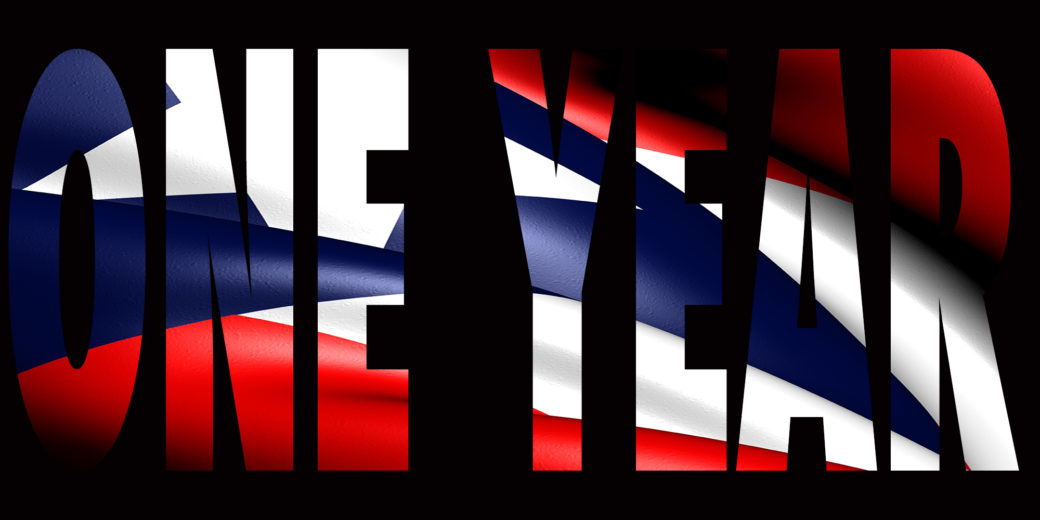One year ago today the people of Puerto Rico were bracing for a Category 4 storm named Hurricane Maria. It touched down just two weeks after Hurricane Irma, a Category 5 storm, grazed the island killing three people and leaving 1 million without power. Maria landed in Irma’s wake on September 20, 2017. It is now considered Puerto Rico’s deadliest natural disaster in a century.
While President Donald Trump touts the governments’ “unprecedented success” in its handling of recovery efforts in Puerto Rico, the basic numbers tell a very different story. The high winds and walls of water decimated the island infrastructure and telecommunications, ripped roads, bridges and damns leaving the population cut off from basic necessities like power, water and shelter.
Now, a year later, here’s what we know about the consequences of Hurricane Maria and the island since.
Death Toll
The number of confirmed deaths directly related to Hurricane Maria after the storm had passed was reported at 64 this included those killed due to winds, landslides and flooding. It quickly became clear that without electricity, food, water and the tropical heat, the official count would rise. With the numbers in constant dispute thanks to several studies and reports done by the Center for Investigative Reporting, Harvard University, the New York Times, Puerto Rico’s governor Ricardo Rosello commissioned the Milken Institute School of Public Health at The George Washington University to conduct an independent study. The report determined that 2,975 people died in the aftermath of the storm due to lack of medical care, lack of power, water, accidents, as well as suicide.
Electricity
The 40 year old electrical grid run by the Puerto Rico Electrical Power Authority was already fragile and failing, not to mention the company itself was bankrupt and placed under the US Fiscal Control Board. Once Maria hit, the entire system was knocked out. All power lines were shut down and inoperable leaving people without refrigeration for food and medicine, hospitals without power to run machines or light to conduct surgeries, and even basic air conditioning. It took 11 months for 99% of residents to have their power fully restored. This is not including people on the islands of Vieques and Culebra who are still not on the grid and receive power from generators. The blackout is the longest in U.S. history.
Companies like Tesla and Sonnan have donated micro grids that harness solar energy to bring power back to the island’s homes, hospitals and schools. Due to the power grids age, poor conditions and regulations, islanders still experience blackouts each time a section of the grid is negatively impacted.
Migration
Before Maria, Puerto Rico’s economic problems and limited job opportunities were driving residents to leave. From 2011-2013 a net 50,000 people were leaving their island lives behind. Since the hurricane devastated the island, an estimated 400,000 people have left Puerto Rico for the US mainland between October 2017 and February 2018 according to a study conducted by Teralytics, a telecommunications company that mapped cell phone usage to determine where migration was happening. Puerto Ricans that fled the island are primarily living in Florida, New York and Pennsylvania. Although there are less people leaving and more returning the question of how long they will remain is still a question.
Schools
Thanks in large part to families moving away from Puerto Rico, the island’s schools were suffering from low enrollment as well as minimal funding. Since the storm pushed more families to leave, the Puerto Rican government has shuttered 283 schools. The closures are being fought by teachers and parents alike out of concerns that new law that allows school vouchers and charter school – public schools that are privately run—to be established. To date a judge has ordered the department of education to keep a quarter of these schools open.
Hurricane Season
What made Hurricane Maria twice as deadly was the fact that Hurricane season had not been kind. Hurricane Irma had touched the island only a month before taking down electricity and causing sufficient damage. So far this hurricane season has been much gentler. In July Beryl, a potentially large storm was downgraded to a tropical depression and Tropical Storm Isaac only brought heavy winds and rains. We hope the remainder of the season which runs from June-October leaves the island in relative peace.

